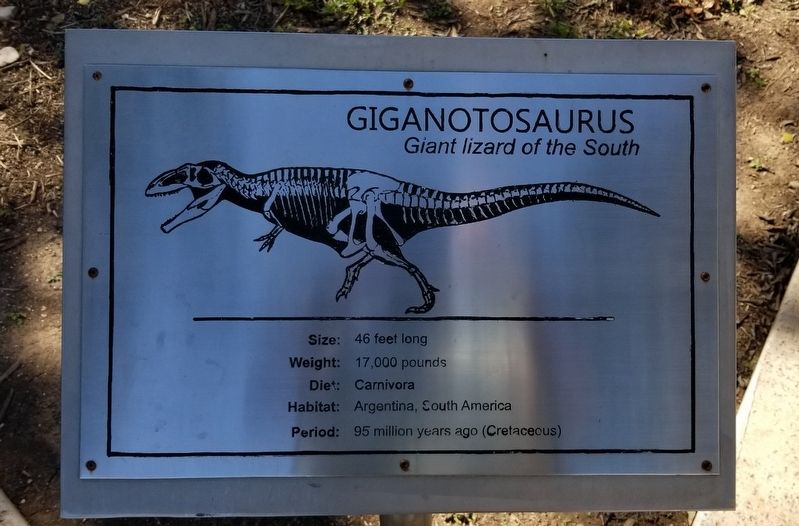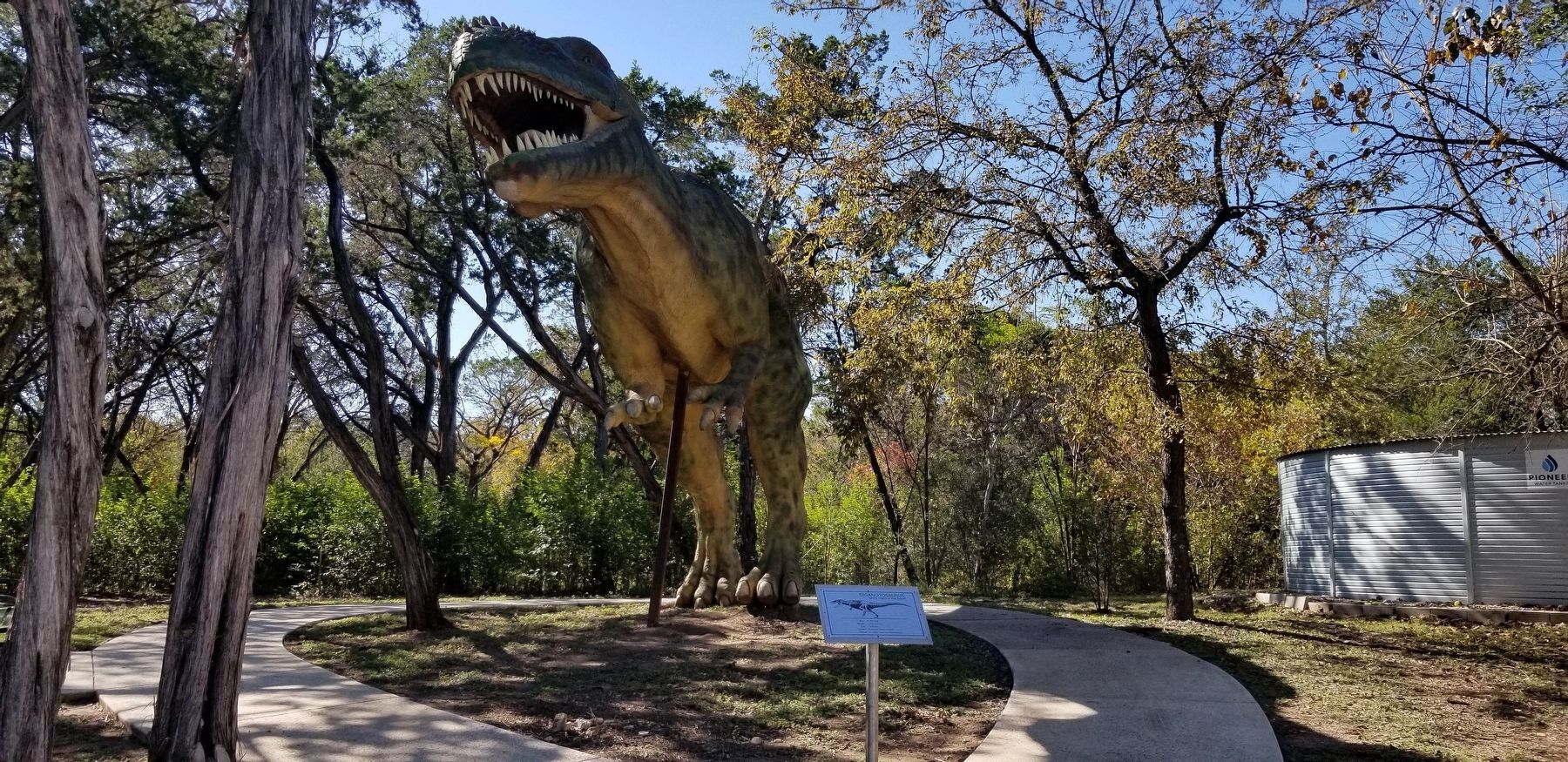Bandera in Bandera County, Texas — The American South (West South Central)
Giganotosaurus
Giant Lizard of the South
Size: 46 feet long
Weight: 17,000 pounds
Diet: Carnivora
Habitat: Argentina, South America
Period: 95 million years ago (Cretaceous)
Erected by Bandera Natural History Museum.
Topics. This historical marker is listed in these topic lists: Animals • Paleontology.
Location. 29° 43.82′ N, 99° 4.09′ W. Marker is in Bandera, Texas, in Bandera County. Marker can be reached from Old San Antonio Road, 0.1 miles north of State Highway 16. The marker is located on the grounds of the Bandera Natural History Museum. Touch for map. Marker is at or near this postal address: 267 Old San Antonio Road, Bandera TX 78003, United States of America. Touch for directions.
Other nearby markers. At least 8 other markers are within walking distance of this marker. Alamosaurus (a few steps from this marker); Torosaurus (within shouting distance of this marker); Smilodon (within shouting distance of this marker); Mastodon (about 300 feet away, measured in a direct line); Indricotherium (about 300 feet away); Stegosaurus (about 300 feet away); Gastornis (about 400 feet away); Deinonychus (about 400 feet away). Touch for a list and map of all markers in Bandera.
Regarding Giganotosaurus. There is a entrance fee to visit the Bandera Natural History Museum which allows you to walk through the dinosaur exhibits and markers.
Also see . . . Giganotosaurus.
Giganotosaurus (/ˌdʒaɪɡəˌnoʊtəˈsɔːrəs/ JY-gə-NOH-tə-SOR-əs[2]) is a genus of theropod dinosaur that lived in what is now Argentina, during the early Cenomanian age of the Late Cretaceous period, approximately 99.6 to 97 million years ago. The holotype specimen was discovered in the Candeleros Formation of Patagonia in 1993, and is almost 70% complete. The animal was named Giganotosaurus carolinii in 1995; the genus name translates as "giant southern lizard" and the specific name honors the discoverer, Rubén D. Carolini. A dentary bone, a tooth and some tracks, discovered before the holotype, were later assigned to this animal. The genus attracted much interest and became part of a scientific debate about the maximum sizes of theropod dinosaurs. Source: Wikipedia(Submitted on January 2, 2022, by James Hulse of Medina, Texas.)
Credits. This page was last revised on January 3, 2022. It was originally submitted on January 2, 2022, by James Hulse of Medina, Texas. This page has been viewed 209 times since then and 14 times this year. Photos: 1, 2. submitted on January 2, 2022, by James Hulse of Medina, Texas.

